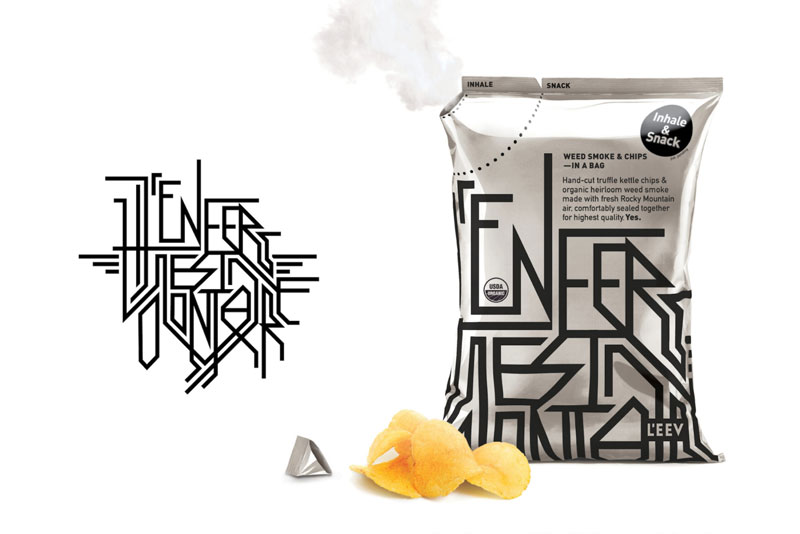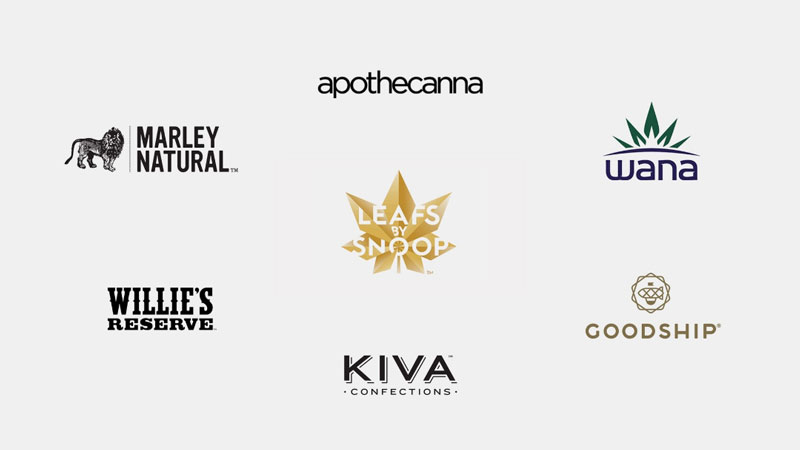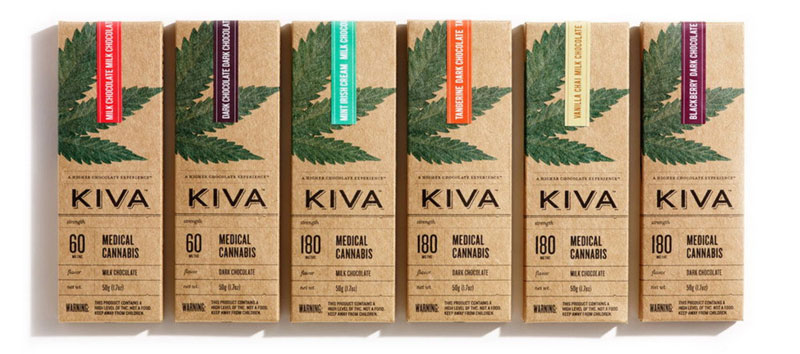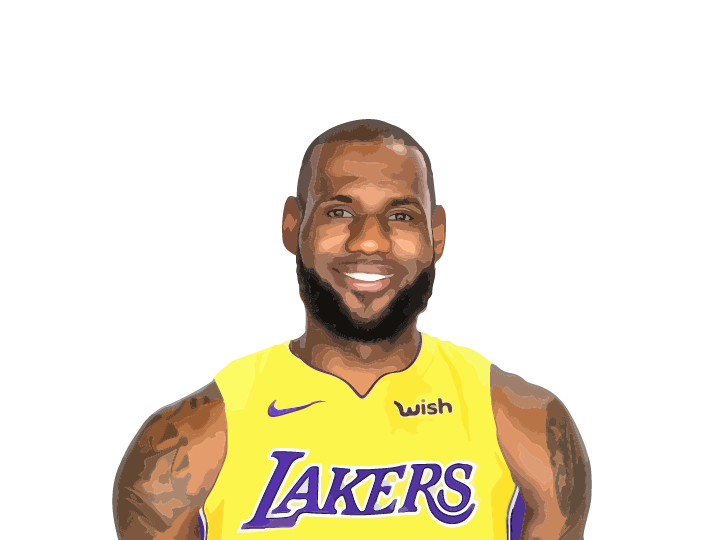Impressive growth across the Canadian fields and stock market
There has already been plenty of excitement around cannabis stocks in the financial markets, with the belief that growth is virtually ensured post-legalization. New technologies are being, and will be, developed in order to test drivers for cannabis, extract oils for new cannabis products, and enhance entertainment experiences. These are just a drop in the bucket of the cannabis leading edge. However, few spaces offer more room for creativity, innovation, and trailblazing, than branding and design.
Cannabis enters the marketplace as a fairly blank slate in branding, marketing, and design terms, which leaves lots of room to explore and work within. Most of the limited associations in this arena (Counterculture, Rastafarianism, Amsterdam) are something that new cannabis companies are trying to distance themselves from. There are some burgeoning examples of this in American states with recreational cannabis, so while Canadian cannabis branding is in its infancy, we are not totally without precedent.

From Street Corners To Corner Stores
While new products and services need branding are constantly entering the marketplace, opportunities to rebrand a formerly illicit product are exceedingly rare. The speed at which cannabis has gone from illegal and ‘dangerous’ to legal and widely accepted is breathtaking, and one of the main challenges in branding cannabis companies and products will be to help reverse some of the lasting negative stigma associated with the plant.
The majority of Canadians were raised in the shadow of giant anti-drug campaigns like Reefer Madness or ‘Just Say No,’ with images like the iconic ‘this is your brain on drugs’ egg directing their perception of marijuana. These campaigns have been shown to be nothing more than propaganda, but untangling these false pretenses is a difficult job for Canadian marijuana branding and marketing agencies. Perception is a brand’s currency, and years of public health campaigns demonizing cannabis have put the weed brand deeply in debt.
While more Canadians (as of February 2018) still support legalization (42%) than oppose it (38%), the gap between them is actually closing. In June 2017, 47% supported legalization, while 35% were against it.
This article in The Leaf, a Canadian publication for original cannabis journalism, where the above statistics appear, includes a quote from Alex Shiff, a senior consultant at Canadian PR firm Navigator, which hypothesizes that this growing weariness could be from the realization of the realities of legalized recreational cannabis. Thoughts like ‘Oh there are going to be cannabis stores on street corners, what’s that going to look like for me, what’s that going to look like for my community,’ could be driving people towards some decision remorse regarding cannabis.
What does all of this mean for Canadian cannabis branding? The creative group tasked with branding this new industry will have to fight against both the inertia of public perception, and the regret of some Canadians, in order to legitimize cannabis as a safe, palatable, engaging product. However, we need only look to our televisions, phones, billboards, stadiums, and basically anywhere else that marketing appears, for a fairly comparable case study.

Branding Cannabis In Canada
While the legalization decision only became official June 18, 2018, recreational cannabis in Canada has been part of the public discussion since Justin Trudeau’s election in October 2015. Since this conversation has been going on, there have been many companies preparing for the possibility of legalization, and the potential goldmine that the Canadian marijuana market represents.
These companies have been dealing exclusively with medicinal marijuana up to this point, but this market is dwarfed by the projections for the revenue that recreational cannabis will begin pulling in, as legalization is rolled out. For this reason, Canadian cannabis stocks are one of the most popular buys at the moment, viewed as uninhibited rocket ships for the foreseeable future.
Canada currently has three main players in the cannabis industry: Canopy Growth, Aurora Cannabis, and Aphria. Selling products under various brand names, these three are each making major preparations for a post-legalization world, including Canopy Growth partnering with Snoop Dogg, and Aphria settling a deal to sell their products through the Shoppers Drug Mart website.

A Branding Vacuum
While these companies have been establishing their operations and strategy within the medicinal marijuana market, one of the main differences between this and the recreational market is the utter lack of branding and design. Medicinal cannabis dispensaries offer little if anything in the way of consumer-facing branding or packaging, because of the need to align more with pharmacies than retail stores. Plain packaging, minimal product differentiation, and no mention of lifestyle or casual uses make the cannabis products available pre-legalization look more like No-Name Brand than the billion-dollar alcohol brands discussed above.
The first-mover advantage that these companies have is great in the short term, especially as they will be able to offer product immediately, in an industry that is already preparing for shortages. However, in the long term, emerging markets are rarely dominated by the companies that first held prime position. Back in 1975, the first personal computer was produced by a company called MITS, but in 1976, Apple released the Apple I, and the rest is history. In music streaming, Pandora pioneered a model that has been perfected by Spotify. Even social media networks like MySpace and Friendster had to forge the way that Facebook, Instagram, and Twitter followed, overtook, and made their own.
What lesson can we take from these stories? That new cannabis companies, some of which don’t exist yet, will emerge to become major players. A driving force behind this will be how they are able to navigate the potentially fruitful, but treacherously regulated field of Canadian cannabis branding.

The Ups and Downs of Canadian Cannabis Branding
Branding cannabis products will come with a wealth of opportunities for designers and marketers. However, these opportunities will not be without restraints. Regardless of how safe cannabis is as a recreational substance, it does put the minds of users into an altered state, where certain activities (such as driving) shouldn’t be undertaken. Additionally, the effects of cannabis on the developing brains of teenagers and adolescents aren’t known with much certainty, so these products must be targeted strictly at adults.
Due to these outlying factors, branding cannabis products requires a certain responsibility during the creative process. Much like tobacco, there are a number of key restrictions that must be obeyed, due to the sensitivity of the product:
Branding or marketing campaigns must not be targeted at anyone under the legal purchase age in each province
There can be no mention or implication of the product evoking positive emotions, or implying a certain lifestyle
Testimonials, endorsements, and real or fictional people are forbidden from ads and brands
These are just a few of the rigorous set of rules that Canadian cannabis branding and marketing agencies must follow when working on projects with cannabis companies. While constraints like these can be frustrating, creativity often flourishes when its back is up against the wall. Designers will be forced to work within a limited area, but with barriers preventing them from exploring options on the length and width of this area, they will have to instead examine the depth, adding an extra dimension to their work.
Dope Design
The emotional response brought on by a brand or design is always at the forefront during the creative process, but in an industry where misinterpretation can lead to legal issues, clarity is paramount. With restrictions on how a brand or design can appeal to a consumer’s emotions, the responsibility for abiding, and reducing the ambiguity in Canadian cannabis branding, will rest squarely on creative shoulders. New marketing techniques and wonderful branding insights will inevitably come from this blank slate cannabis industry, but not without the early struggle to find out what does and doesn’t work within these strict regulations.
Graphics and photography will play a huge role in setting the new cannabis branding paradigm, establishing how cannabis is viewed in Canada, and creating emotional connections with novel products. Designers will be tasked with synthesizing the heralded creative history surrounding the cannabis plant with the modern regulatory landscape, bringing the counterculture to the checkout counter, while attempting to teach old folks about new tokes. A quick look at the way that alcohol is visually portrayed can provide a glimpse into cannabis’ branding future, even if it takes a while for the perceptions about the plant to untangle from the propaganda.
Responsible and effective design is one of the best methods for bringing about cannabis destigmatization. Off the top of your head, the typical weed smoker is probably wearing a faded T-shirt with baggy pants, possibly with dreadlocks, probably not carrying a briefcase, undoubtedly reeking of pungent smoke. But, that is not the reality and changing this stereotype will do wonders to give cannabis a more mainstream appeal.
Think of the many cultural archetypes that we have around alcohol, and the different groups that they cross. Businessmen sipping scotch. College kids drinking cheap beer. Wine moms. Nothing about being associated with any of these will damage someone’s reputation, identity, or social life, but the stoner hippie described above doesn’t have the same leeway. Cannabis brand Identity design will establish new cultural lanes for cannabis users to fall into.
Edibles and cannabis-infused products won’t be legal on October 17th, but the imagery surrounding these markets in American states with legal recreational cannabis is beginning to break down the negative preconceptions. Whether it’s an elderly couple sipping on a cannabis-infused ice tea on their front porch, or a group of friends looking stylish during happy hour, there are new images for designers and branding experts to create, in order to bring cannabis to new demographics.
Despite the restrictions and limitations on what can be depicted, Canadian cannabis branding is coming, and the opportunities are everywhere. Will it be the designers who shape how the country views this previously prohibited pot?


